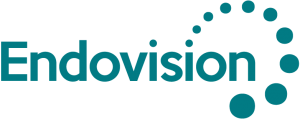It’s crucial for hospitals and clinics to clean and sterilise their surgical instruments in accordance with standards observed by Australia’s NSW Health. In this blog, we’ll go into detail on how to sterilise your tools, in order to prevent infection post-surgery. These tips are derived from the suggested practices of NSW Health, and will allow you to achieve proper compliance with the requirements of the Public Health Regulation 2012.
Dispose of Single-Use Items
Any instrument that penetrates the skin and which cannot be adequately sterilized must not be re-used. These single-use tools may be in the form of needles, needle holders, disposable cholangiogram forceps, single use laparoscopic instruments, dressing or dissecting scissors, and more.
Designate Proper Premises
Before the sterilisation process, you should make sure that the premises are an appropriate distance from all forms of contamination. It is advisable to perform the process in a separate room, as you are able to monitor said room for the presence of contaminants during the process of sterilisation.
Wear Appropriate Attire
You should always conduct any sterilisation of tools in the proper attire, known as “Personal Protective Equipment”. Your clothing should be complete, and should include gloves, eye protection, and fluid repellent masks. Fluid resistant aprons or gowns should be worn before and during cleaning.
Clean Instruments Quickly
Steps for Manual Cleaning
Manual cleaning refers to situations wherein an automatic washer cannot be used to clean the instruments.
- Rinse off any visible blood and body fluids with running water.
- Dismantle/open all items for cleaning.
- Fill the sink with warm water and necessary cleaning agent.
- Place in the sink.
- Wash/scrub all surfaces with a soft brush. Remove stubborn staining with a non-abrasive scouring pad or soaking in an approved stain-removing solution
- Minimize the generation of aerosols.
- Rinse in warm to hot running water.
- Dry items using a drying cabinet, or with a lint-free cloth.
Steps of Automated Cleaning </H3>
Automated cleaning refers to situations wherein the use of instrument washer, washer-disinfector or an ultra-sonic cleaning is possible.
- Pre-rinse with water
- Wash in warm water with a cleaning agent recommended by the manufacturer. (Note: all surfaces must be exposed to the direct spray of water.)
- Rinse again with hot water (80 – 86 degree Celsius) with a drying agent added.
- Drain, leaving the contents at a temperature for quick drying.
Sterilisation
Prior to putting instruments into the steriliser, ensure that they are properly dried. It is important to note that they must be open and packaged in a pouch (without overlapping).
Seal the package properly, and do not use staples under any circumstances. Position it upright, or in accordance with the manufacturer’s specifications. Conveniently, most packaging contains an indicator that shows that the load has been processed.
Once sterilised, store the instruments in a clean and dry area away from any sunlight.
Prioritize Patient Safety
In order to prevent the spread of diseases, it is vital that medical institutions and medical practitioners have adequate knowledge of the proper sterilisation processes, in accordance with NSW Health. This ensures that no matter how advanced this equipment is, that it is safe and suitable for use on patients with vulnerable or compromised immune systems.
Here at Endovision, we want the best for your patients too. That’s why we continue to invest in products that are world-class and patient-focused. Learn more about our products, or call us to get a complete 14-day no obligation trial for your hospital department.


